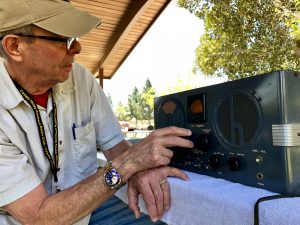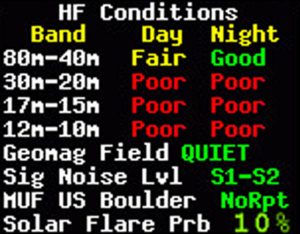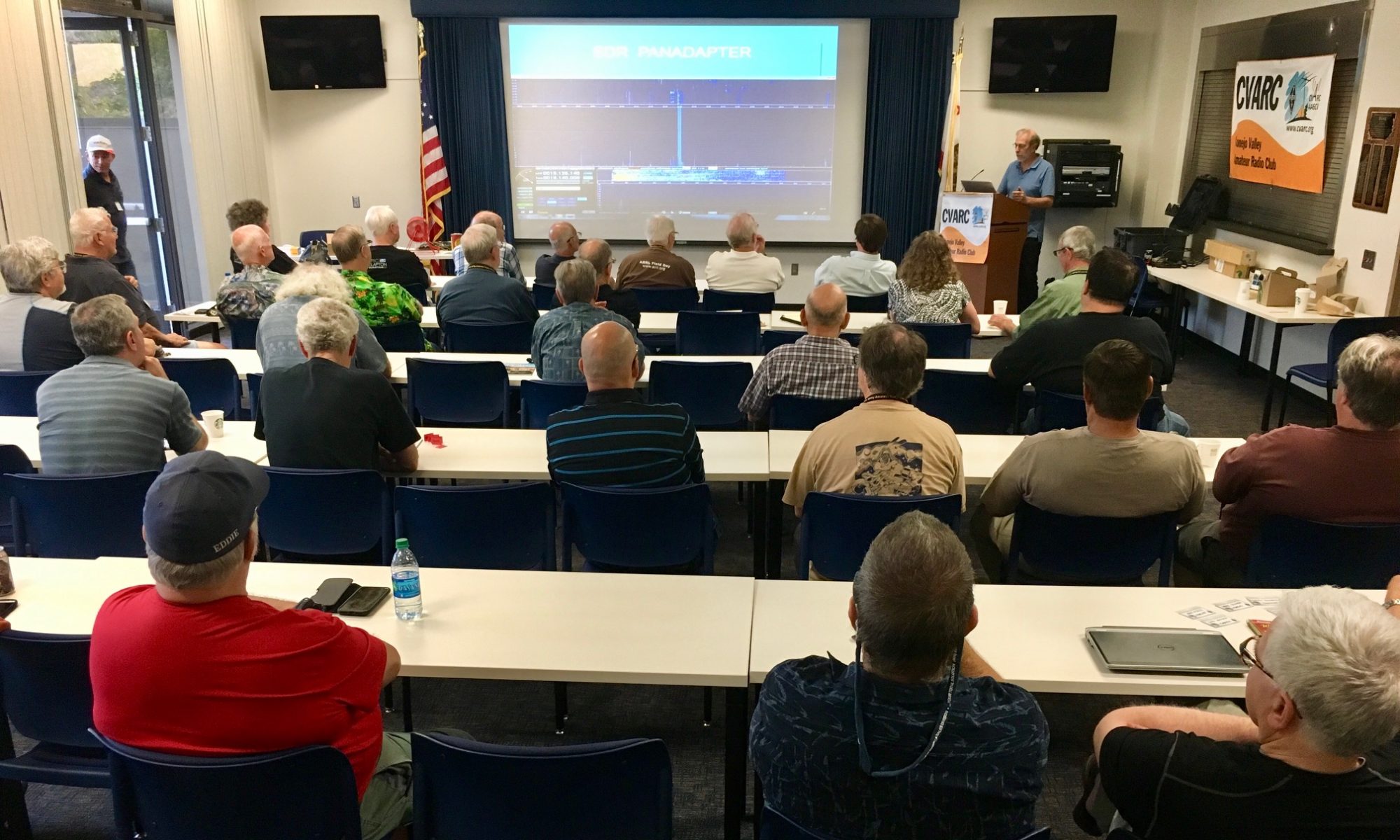 By Norm Cambell-AB6ET
By Norm Cambell-AB6ET
Each band has its own personality and characteristics. The sun and ionosphere, as well as other factors, cause the HF bands to be different during the day or at night and also at different times of the year. Getting on the air is the best way to find out what works and what doesn’t. Pick a band, get on it, stay with it for a while. Tune around, move up and down across the band. Try different times of day.
HF bands are not quiet and solid copy like VHF/UHF FM simplex or repeaters. It takes a good ear to successfully hear HF signals. SSB has its own sound. CW has its own sound. Mix in QSB, noise, interference, other band conditions, and you have some listening to do to gain skill on HF.
With band conditions such as they are in relation to the sun cycle, the bands can be in or out. Sometimes they are in, but often limited. Sometimes they are really in and everything is possible. Sometimes they are out and you think your radio is broken. It takes listening, listening to WWV, checking propagation charts, beacons, and anything else available to us. Lower bands have been better, higher bands have been poorer. Mostly it takes turning the radio on.
your radio is broken. It takes listening, listening to WWV, checking propagation charts, beacons, and anything else available to us. Lower bands have been better, higher bands have been poorer. Mostly it takes turning the radio on.
Different parts of each band are set aside and regulated for each license class and also for phone or CW. And parts of those sections also have general use practices that can be determined by listening for a while. Check the frequency and band charts to determine what should be used and where. Theory is fine up to a point. What counts is practical application.
In general, these characteristics are what I’ve found for the HF bands. Everyone’s experience is a little different, so get other opinions too. When hams got “200 meters and down,” this is what we got.
160m: Nighttime band. No real experience using it. Have listened. Very low on HF, just above the AM broadcast band. Propagation similar to AM broadcast band, probably need a lot of power to make yourself heard. Some operators have made worldwide contacts even using lower power. Really long wavelength also means really long antenna.
80/75m: Nighttime band. 80m generally thought of as the CW portion, 75m generally thought of as phone portion. It’s all called 80m. Often very good for local (short distance to a few hundred miles) but can open up now and then for very long distance communications. Lots of nets both voice and CW. Lots of high power stations on the air, but also ordinary power like us with 100w. Lots of activity including long time operators on the air burning up electrons. Beware of lids. Long wavelength, long antenna.
60m: Channelized. No real experience other than listening. Guessing characteristics somewhere between 80m and 40m at different times of day and night.
40m: Daytime/Nighttime band. Propagation and conditions changing all the time. Real HF conditions apply. Pretty good all around band. Daytime good for local (short distance to a few hundred, maybe up to 1000 miles.) Nighttime can be worldwide, local goes away but might still be there. Night is also the time when foreign shortwave broadcast stations chew up the top part of the band. Lots of nets during daytime. Good experimental conditions for QRP. Lots of beginner and tolerant CW operators, but also high speed and experienced DXers too. Busy during contests. Digital operations use a certain part of the band. Antennas are long, but not as long, more manageable.
30m: Small CW only band, also a no contest band. Conditions should be similar to 40m and 20m but can vary greatly.
20m: Daytime/Nighttime band. Often thought of as a long or longer distance national and worldwide band. Usually not good for local contacts within a few hundred miles. Can be active day or night. Conditions change all the time. Some national nets, usually daytime. Lots of DX. Often very skilled operators, many “big-gun” stations. Different activities on different parts of the CW and phone portions. Well established digital part of the band. Lots of activity during contests. Antennas are shorter, more manageable lengths, lots of varieties available.
17m: Mostly daytime/can be nighttime. Band conditions have to be checked, often the band is out, but you never know, check during daytime. But when it’s in it’s a nice band on both CW and SSB. Good for national contacts, maybe DX too. A no contest band. Also, shorter antennas due to higher frequency.
15m: Daytime. Usually the band is out. When it’s in it’s a good band for national and international contacts. On rare occasions the band is in at night, but you will have to wait a long time to find it. This is the band used on Wednesday nights on 21333 kHz at 7:00 pm for the CVARC local HF net. At that time of day the band is usually out so it’s just ground wave local. Vertical antenna polarization has been found to be most useful in these local contacts at night. Antennas are getting short.
12m: No experience. The band is usually out. Upper end of band is near 25 mHz WWV. If you can hear WWV at that frequency maybe the band is in. A no contest band.
10m: Daytime. However, mostly the band is out these days. Ten meters is quirky and you have to listen a lot. One way to check is to listen for the beacons just below 28300 kHz. If the band is in you will hear the low power CW beacons from stations that are always on the air. When the band is in it’s really in and a lot of fun. You can work the world on 10 watts. It’s a huge band so regular HF activities like CW and SSB are lower. FM repeaters and simplex are higher. There is a Novice and Technician voice portion between 28300 and 28500 mHz. If there is activity on the band it’s likely that’s where you would find it. You never know. Since the band has been out for so long I don’t often listen except to check beacons now and then. Antennas are even shorter.
Those are my experiences. Try it yourself and develop your own thoughts. Get on the air. Nothing is perfect and never will be. Just do it.
